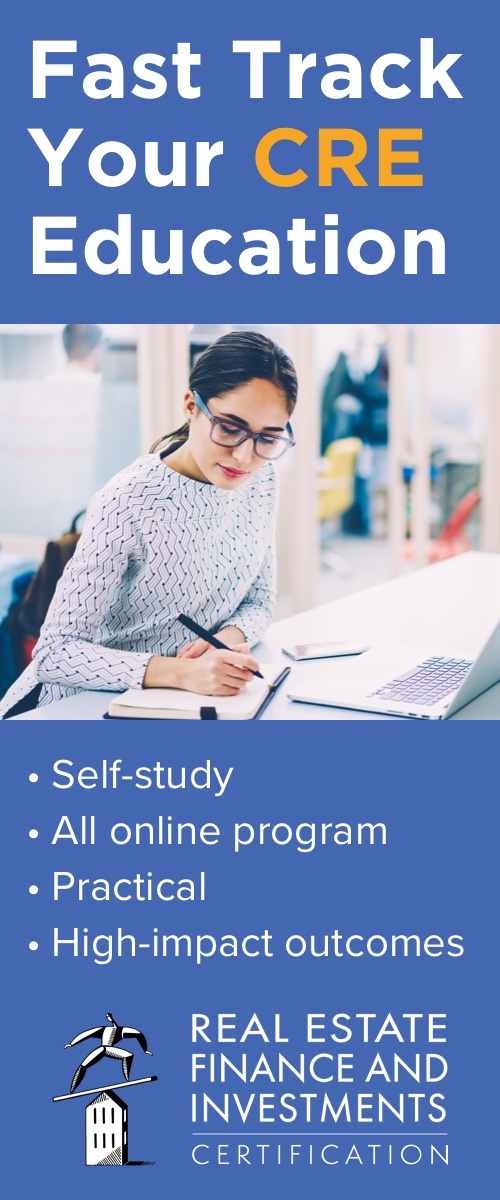Overview
A commonly asked job interview question for business school students is, “If you had $100 million, how and where would you invest?” While there is not a “right” answer to the question (i.e., there is no “right way” to invest in real estate), there are well-reasoned responses that can be informed by two key studies on investment vehicles and property risk.
Summary
Listen to this narration if you prefer
There are key qualitative differences between alternative real estate investment vehicles, such as levels of liquidity, leverage, and reporting and operating control. Linneman Associates simulated institutional investor returns for a $100 million investment over a 7-year horizon in Unlevered Core (proxied by NCREIF), Core Plus, REITs (proxied by NAREIT), and Value-add funds, each under 4 different market scenarios. Without losing sight of the qualitative nuances specific to each vehicle, the 16 scenarios are compared quantitatively.
In the simulated Base market case (2% annual NOI growth and an 8% residual cap rate), pre-promote IRRs were 10.5% for Core, 16.3% for Core Plus, 13.0% for REITs and 20.0% for Value-add. The Core option performed worst in terms of both IRR and equity multiple in all scenarios except for in the Disaster case, where Core Plus performed the worst, falling victim to its higher debt service and higher management fees. The Value-add vehicle performed the best on both IRR and equity multiple bases in all four market scenarios, even when measuring the limited partner’s post-promote returns at various preferred return hurdle rates.
The analysis notes that interim performance measurement is only useful for the most conservative strategies, as more opportunistic strategies are difficult to evaluate prior to a full liquidation of investments. However, while the Value-add fund generally presents the best risk-reward balance, it requires that successful stabilization is in fact achieved and that the investor is willing to risk capital loss in exchange for greater upside.
A second study performed by Linneman Associates looked at how “at risk” different property investments are to an economic downturn. The study used an 8-year hold period for 3 hypothetical multifamily investments: a class A property with a low yield and high NOI growth in a Gateway market (“Gateway A”); a class A property with a mid-range yield and medium NOI growth in a secondary market (“Secondary A”); and a class B property with a high yield, but low NOI growth, in a tertiary market (“Tertiary B”).
Assuming cash flow margins of 83% of NOI across all investments (reflecting on-going cap ex), the study revealed that, absent NOI growth (i.e., the simulated downturn), higher leverage does not always translate into higher IRRs and equity multiples. Evaluating returns across property types, the Tertiary B property outperforms Gateway A and Secondary A properties over the longer hold. That is, in both economies, the highest equity IRRs are generated by the Tertiary B property, regardless of leverage or economy. Similarly, the Tertiary B property also generates the highest percentage share of return from operating cash flows, reducing its risk by making it less dependent on value appreciation. This is due to the higher going-in yield generating high cash-on-cash returns, particularly at higher leverage. In contrast, when comparing properties under similar economic conditions, the least attractive scenario generating the lowest comparable returns is the highly leveraged Gateway A investment, particularly in a Realistic case, where you bet on high growth which fails to occur.
Questions
These are the types of questions you’ll be able to answer after studying the full chapter.
1. What are the four main institutional real estate investment vehicles, and which one did the Linneman Associates study conclude generally provides the best risk-reward balance?
2. What are some of the qualitative differences between the four main institutional investment vehicles?
3. Under what market conditions would higher leverage not necessarily translate to a higher investment IRR?
Audio Interviews
A benefit of a long-term holding period (2:59)
BRUCE KIRSCH: One of the old cliches of real estate is that you make money on the buy, and throughout the rest of the lifetime of that investment you’re really just trying your best to not lose that value that you captured at the point of acquisition. One of the advantages of being a really long-term investor is that you don’t have to be 100% right at the point of purchase. Versus if you’re looking at a much shorter timeline, if you’re off by 10% on the purchase you could end up walking away flat or at a loss.
DR. PETER LINNEMAN: This was something that I learned, really over the last 20 years of my career, that in an asset that does not have a lot of operating leverage, it has some operating leverage, you could be better at it than I am. But in a business, compared to Amazon, where there’s not a lot of operating leverage in real estate, if I buy badly, and I hold it for a year or two, there’s no way I can pump the profits enough to offset that I bought it 15% too high. There’s just not enough operating leverage to do that. When you throw in the fact that when values drop, also it tends to be when cash flows are dropping on top of that from a cyclical point of view. There’s not enough operating leverage for me to go steal all your customers. It’s just not enough operating leverage. So the short-term part is very difficult if you don’t buy well.
The long-term changes that dramatically, which is, if I look back on an investment that you held for 30 years whether you bought it 10% too high 30 years ago is not going to determine your return over the 30 years. What’s going to determine it is did you pick a good property, in a good market, were you able to manage it well. And, just quick, you bought it for 15% too high, over 30 years that’s a half a percent a year. And as you know that’s a rounding error into what can go right or wrong. You buy it 15% high, and you sell it a year later, that’s huge because you cannot make up 15%. And so by having a long holding horizon it eliminates having the timing part. Focus on you’ve got to have good assets in good markets, you got to run them well. And it is the lesson of good real estate, the lesson of good real estate is, if you buy good real estate you hold it over cycles, yes there’ll be downs, and yes there’ll be ups, but it will perform- because it’s a good location, a good building, well managed. Even a good building in a good location well managed, If you buy too high and hold for a year or two you may not be able to offset that.
Answering the $100 million-dollar question (3:28)
BRUCE KIRSCH: We open the chapter by referencing one of these very common interview questions, which is if you had $100 million right now, where and how would you invest, it, and why. Well if we limit that to the asset class of real estate, generally speaking, how has your, if I had $100 million opinions, changed over the course of your career?
DR. PETER LINNEMAN: It’s changed in two ways. One is that when I was young, I would have answered it almost on an absolute basis. I think the absolute return is higher in that sector than in another sector. And as I’ve aged, now the first question I ask is, well, what’s your tolerance for risk, not what return is great, but what’s your tolerance for risk. And that’s one of the things I understand better now than 40 years ago, quite honestly, which is, I used to see investors do low leverage, low return, and I’d say they’re stupid they should go do these high energies, do a development, do whatever. I now look at it, and I better understand some people are just trying to maintain wealth, they’re not trying to create wealth. There’s get rich money, a friend of mine has the phrase, Darla Moore, get rich versus stay rich. What I better understand than I used to is not everybody is looking to get rich. Life insurance companies are not looking to get rich, pension funds are not looking to get rich. They’re looking to stay rich, and to send out retirement checks, and insurance checks, and they’re not stupid. They just have that mission. That’s the one thing is you cannot answer that $100 million question without the person asking, and saying, and here’s my risk tolerance or here’s my risk objective. OK. And I wouldn’t have said that 40 years ago.
And the second thing is that cash flow is wonderful. And when I was younger I understood this, but I didn’t have it deep in my soul, which is, you can show me a return profile of a 10% IRR for example- and you can show me another return profile at a 7% IRR, and I might much prefer the 7%. Why? Because it cash flows, and cash flow if you think about it is in many ways the ultimate risk mitigant. And so oftentimes you do a highly leveraged real estate investment, that after you do your TIs, and leasing commissions, and so forth, there’s no cash flow. Now by the way, It’s a great residual bet, but residuals sometimes work out, sometimes don’t, they’re more of a coin flip. Cash flow tends to mitigate the counting on the coin flip to come out right at the end, and again I knew that intellectually 40 years, ago 20 years ago. I appreciate the beauty of cash flow, and it’s probably because I’ve invested in land which is residual, I’ve invested in buildings that leverage themselves to a residual, and you go, huh, sometimes the coin flip doesn’t come out right, and you’ve got nothing to offset it in cash flow.
Key Terms
To view the definition, click or press on the term. Repeat to hide the definition.
The fund sponsor entity’s share of excess profit above the preferred return, with which no cash investment is associated. Also known as “sweat equity.”
A private equity fund distribution provision that allows for the sponsor to be caught up to the same rate of return as the Limited Partners.
Chapter Headings
- Study #1: Investment Vehicle and Limited Partner Performance
- Qualitative Differences
- The Set-Up
- Market Scenario Comparisons
- The Impact of Sponsor Promotes
- Sensitivity Analyses
- Study #1 Conclusion
- Study #2: Property Risk and Opportunity
Learn about REFAI Certification
< Ch 19 | Real Estate Private Equity Funds
Ch 21 | REITs and Liquid Real Estate >
Table of Contents
Index
Buy the Book





